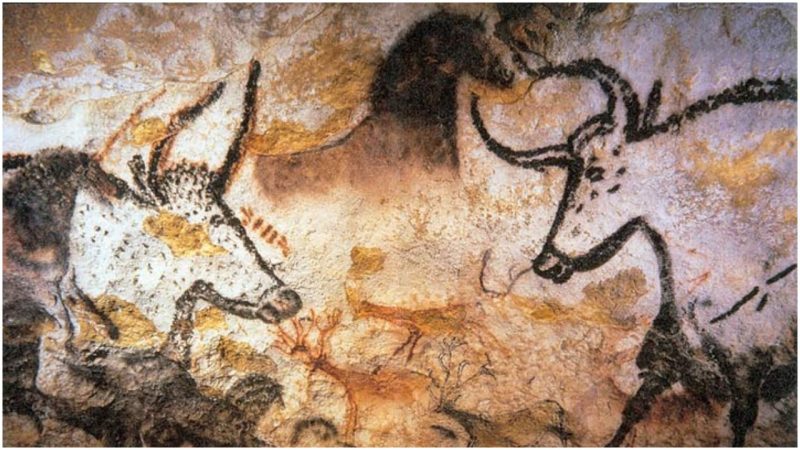They say what’s beautiful is oftentimes fragile too, and that is particularly true of the famous Palaeolithic cave paintings at Lascaux in France. This fantastic place was discovered back in 1940 by the 18-year-old Marcel Ravidat.
The teenager had then returned to the site accompanied by three of his friends, Jacques Marsal, Simon Coencas, and Georges Agnel. These young explorers could not have anticipated at that point that going inside the complex, through its narrow shaft, meant to travel back more than 17,000 years in time.
The Lascaux complex is situated in the Dordogne region of southwestern France. The ancient walls of the cave are decorated with large animals once native to the area, but also with human figures, abstract and geometric images. Since its discovery, these exceptional paintings, created by by our human ancestors, have dazzled archaeologists with their beauty while setting them a number of puzzles to work out too.
Several areas go to make up the vast complex of the Lascaux caves. Perhaps two of the most famous and most fascinating are the Hall of the Bulls and the Apse, but the complex includes other great treasures such as the Passage gallery, the Chamber of Felines, the Shaft, and the Nave. Since December 1940, less than four months after the discovery of the complex, the Lascaux caves have been legally protected as a historic monument.
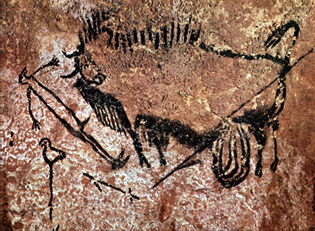
Almost 2,000 figures can be seen on the walls of the caves. The paintings do not portray any of the surrounding landscape of the region as it might have looked back in those days. Red, yellow, and black dominate the colors of the ancient drawings. Carved in stone, some images are too faint to be noticed, and some have degenerated entirely. Animals are the subject of approximately 900 out of the 2,000 drawings. So far, 605 out of the 900 animal representations have been precisely identified, some of the species now being extinct. Over 350 of them are equines and some 90 are of a stag. Cattle and bison are fairly frequent in the images too, but what may be missing is the figure of the reindeer, deemed to be one of the main food resources for the primal artists.
According to the British academic Nigel Spivey, in his BBC One documentary series “How Art Made the World“, the dot and lattice patterns overlaying the animal images are quite similar to hallucinations caused by “sensory-deprivation”. Interesting enough, Spivey further proposes that it is in this relation, among the animal representations and the hallucinations, from where the art of drawing as born.
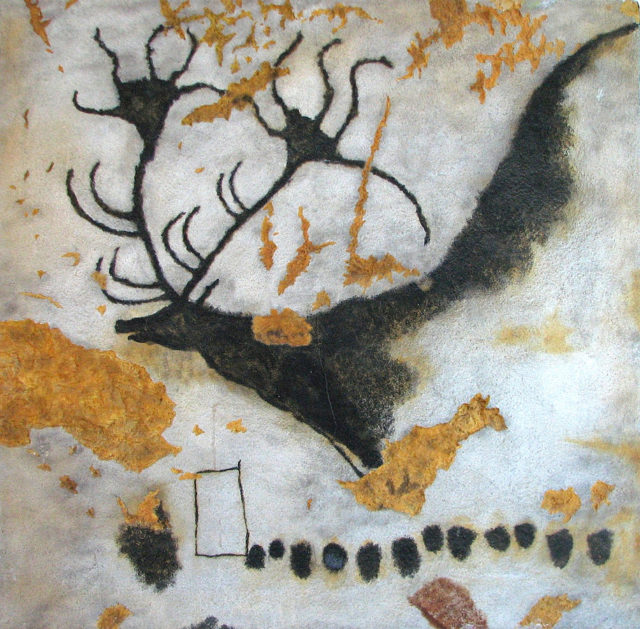
Inside the Hall of the Bulls, the most striking bull representation is one that is 17 ft long, and most likely the largest animal discovered in cave art paintings so far. The bulls here also seem to be represented as being on the move. There is visual depth in the work. Although primitive, the notion of perspective seen in the paintings is regarded by many as surprisingly advanced for that time.
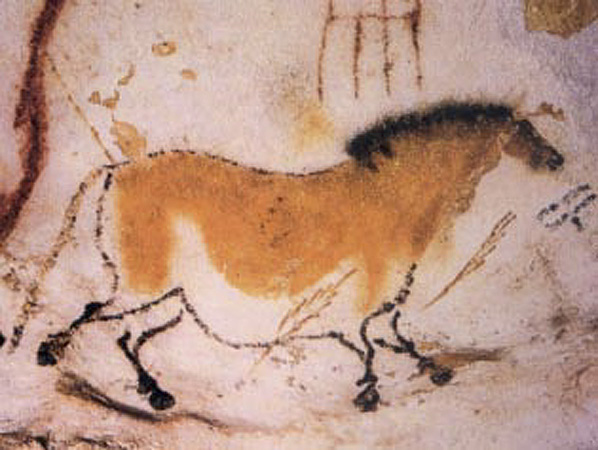
Anthropologists, researchers, and art historians have all interpreted the meaning of the cave art in Lascaux. They have theorized whether the paintings are recollections of hunting experiences of the artists, or if they form part of mystical rituals and simulacrums used to enhance their hunting encounters in the future.
An intriguing notion is how these animals are grouped together. For example, the aurochs (one of the extinct species being represented) is often put next to deer, bears, and horses. Bisons are situated in another cluster of animals, perhaps because this animal was a natural adversary of the aurochs. Horses, as one of the friendliest of animals, are distributed in the majority of the groups. When the prehistoric human artists transformed the inside of the caves into a timeless work of art, they appear to have taken care to represent the animals according to their place in the ancient wilderness too.
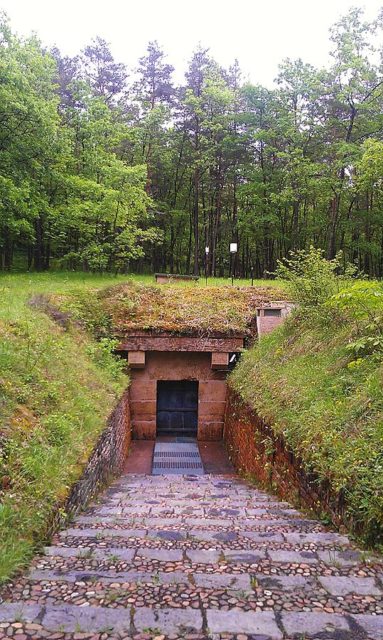
The area of the cave known as Apse is a little bit more mysterious than other chambers in the complex. Being semi-spherical, the entire surface of the Apse chamber is covered with thousands of twisted, overlapping, carved drawings. According to the South African archaeologist David Lewis-Williams and the renowned French prehistorian Jean Clottes, the type of art dominating the Apse is spiritual in essence.
They have both researched and studied similar ancient artworks of the San People of Southern Africa, and have claimed that such art is likely related to visions experienced during ritual trance-dancing. Regardless of geographical location, they believe such art is the product of the same function in the human brain.
The world has been able to wonder at the original Lascaux caves for a short period of time only. Once the complex was opened to the public following the end of WWII, the ancient cave artwork suffered damage because of the presence of humans. The thousands of people that visited the Lascaux each day changed the atmosphere inside the chambers. By the late 1950s, carbon dioxide, light, heat, and humidity combined together, had brought the cave paintings to a perilous state. In 1963, the cave complex was officially closed and access to the chambers has been restricted ever since. The paintings were luckily restored to their original condition.
In 1983, Lascaux II was opened near the location of the ancient caves. A faithful replica of the Great Hall of the Bulls and the Painted Gallery, this new site recreates the experience of the ancient original and remains open for the larger audience without harming any of the original work. The full scope of the Lascaux cave art can be seen at the Center of Prehistoric Art at Le Parc du Thot.
In the last two decades, a fungus has become the greatest threat at Lascaux. The local invader has rapidly spread in the cave interior, but at the present time is being kept under control.
Read another story from us: Top 9 Ancient rock art discoveries
In 2012, the fungus was officially named “Ochroconis lascauxensis” after the caves where it was actually first detected. The species is closely related to yet another fungus known as “Ochroconis anomala” observed also inside the cave back in 2000.
